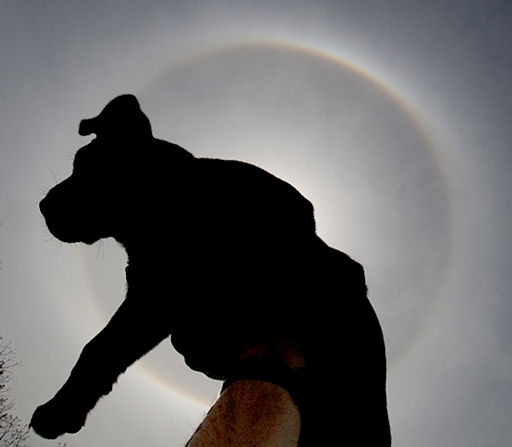Are we alone? Your iPhone has the answer. Download the all-new Drake Equation app to calculate the population of the Milky Way. | | |
SUNDIVING COMET: A comet just discovered by amateur astronomer Sergey Shurpakov is diving past the sun today, and it will probably not survive. Click here to view a movie of the death plunge recorded by the Solar and Heliospheric Observatory--and check back for updates in the hours ahead.
PLANETS AT DAWN: It really was better than coffee. This morning, sky watchers around the world woke up at the crack of dawn to witness a bright conjunction of Venus and Jupiter. Jefferson Teng photographed the planets from the shore of Lampung Bay in Indonesia:

"I had no trouble seeing this rare and beautiful conjunction despite the glaring lights of the Port of Panjang below," says Teng. "Venus and Jupiter were that bright."
Did you oversleep and miss the show? Try again tomorrow morning. The two planets will still be less than 1 degree apart on Thursday, May 12th.
more images: from Tomasz Adam of Kraków, Poland; from Stefano De Rosa of La Morra (Italy); from Paco Bellido of Cordoba, SPAIN; from Wienie van der Oord of the Arava valley, Israel
SUNDOG: Are you Sirius? "No," says John Stetson of Falmouth, Maine. "This puppy's name is Otis; he belongs to my daughter-in-law Amanda who is visiting from North Carolina." On May 9th, Otis blocked the glare so Stetson could photograph this lovely ring around the sun:

"It was a dog day afternoon," says Stetson.
The ring around the sun, visible thanks to Otis, was created by sunlight shining through ice crystals in high cirrus clouds. When the geometry is right, those same ice crystals can create genuine sundogs. Look for them whenever the sky is hazy with cirrus. And if you don't have a puppy to block the glare... well...browse the links below.
puppy alternatives: from Doug Showell of Bellevue, Nebraska; from Brandon Fell of Seattle WA; from Pamela Williams-Gifford of Portland, Oregon; from Alan Atwood of Cedar Rapids, Iowa; from Craig Haugen of Americus, Missouri; from Ivo Dinsbergs of Berzciems, Latvia
April 2011 Aurora Gallery
[previous Aprils: 2010, 2009, 2008, 2007, 2006, 2005, 2004, 2003, 2002]
Potentially Hazardous Asteroids (
PHAs) are space rocks larger than approximately 100m that can come closer to Earth than 0.05 AU. None of the known PHAs is on a collision course with our planet, although astronomers are finding
new ones all the time.
On May 11, 2011 there were 1218 potentially hazardous asteroids.
Notes: LD means "Lunar Distance." 1 LD = 384,401 km, the distance between Earth and the Moon. 1 LD also equals 0.00256 AU. MAG is the visual magnitude of the asteroid on the date of closest approach. | | The official U.S. government space weather bureau |
| | The first place to look for information about sundogs, pillars, rainbows and related phenomena. |
| | Researchers call it a "Hubble for the sun." SDO is the most advanced solar observatory ever. |
| | 3D views of the sun from NASA's Solar and Terrestrial Relations Observatory |
| | Realtime and archival images of the Sun from SOHO. |
| | from the NOAA Space Environment Center |
| | the underlying science of space weather |
| | for out-of-this-world printing and graphics |

